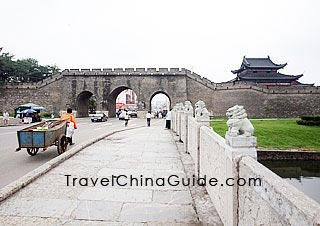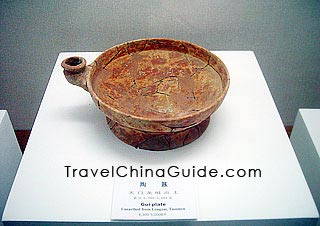Jingzhou Travel Guide
Jingzhou Facts
Chinese Name: 荆州 (jīng zhōu)
Population: 6,600,000
Area: 14,100 square kilometers (5,444 square miles)
Location: in the south-central of Hubei Province, central China
Administrative Division: 2 districts (Jingzhou, Shashi); 3 counties (Jiangling, Gong’ an, Jianli); 3 county-level cities (Songzi, Shishou, Honghu)
Area Code: 0716
Zip Code: 434000
GDP (2018): CNY 208.218 billion (USD 31.467 billion)
Ancient Capital of the Kingdom Chu with 483-km Long Golden Waterway
Situated at the Jianghan Plain, Jingzhou is close to the Golden Waterway Yangtze River, with Wuhan to the east, Yichang south, and Jingmen north, as well as bordering with the Three Gorges. Jingzhou is the birthplace of Chu culture and the center of the Three Kingdoms (220 - 280) culture. During the Spring and Autumn Period and the Warring States Period (770 BC - 221BC), 20 generations of Chu kings set capital in Jingzhou, forming Chu culture comparable to Athens culture in ancient Greece. Many stories of the Three Kingdoms took place here. The Ancient City of Jingzhou of the Three Kingdoms period is still kept, where you can see the old city walls. The development and prosperity of Jingzhou depend on the Yangtze River to a great extent. The 483 kilometers (300 miles) long golden waterway runs through the whole city and Yanka Port is the third largest comprehensive open port in the middle and upper reaches of the Yangtze River.
![]() Top 10 Ancient Cities in China
Top 10 Ancient Cities in China
Ancient City of Jingzhou
|
|
How to Get to Jingzhou
Weather
Jingzhou has subtropical humid monsoon climate with four seasons clearly demarcated. Cloudy and sunny days are not certain in spring, it is humid and hot in summer, fine autumns, and dry cold winter. There is plenty of sunshine in Jingzhou and the frost free period is 220-300 days.
Average Temperature: 16 ![]() C (61
C (61 ![]() F) annually
F) annually
Rainfall: plenty of rain, annual even precipitation 1200 mm; concentrated on June, July and August, as well as spring
When to go: Spring and Autumn are the best period to see Jingzhou.
Jingzhou Travel Tips
![]() History: a cultural ancient city with 2000 years history with the reputation of "the finest under heaven, being overwhelmed by 9 divisions"; one of the cradles of Chu Culture, and used to be the capital of the Chu State during the Spring and Autumn Period for totally 20 emperors; in Northern and Southern dynasty, the capital of Qihedi, Liangyuandi, the Later Liang; in Five Dynasties, the capital of the Nanping State
History: a cultural ancient city with 2000 years history with the reputation of "the finest under heaven, being overwhelmed by 9 divisions"; one of the cradles of Chu Culture, and used to be the capital of the Chu State during the Spring and Autumn Period for totally 20 emperors; in Northern and Southern dynasty, the capital of Qihedi, Liangyuandi, the Later Liang; in Five Dynasties, the capital of the Nanping State
![]() Physical Features: higher west and lower east; densely cover by the network of waterway, as well as lakes; with winding river course
Physical Features: higher west and lower east; densely cover by the network of waterway, as well as lakes; with winding river course
![]() Local Highlights: the Shashi Jing Satin; the Shashi basin and plate golden painted
Local Highlights: the Shashi Jing Satin; the Shashi basin and plate golden painted
![]() Jingzhou International Dragon Boat Festival: It is held in the first week of May for the memorial of Qu Yuan, a famous patriot of Chu State who jumped into the Miluo River.
Jingzhou International Dragon Boat Festival: It is held in the first week of May for the memorial of Qu Yuan, a famous patriot of Chu State who jumped into the Miluo River.
![]() Related Hiking Tour Itinerary: Jingzhou Trip
Related Hiking Tour Itinerary: Jingzhou Trip

